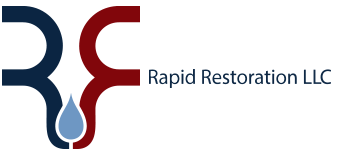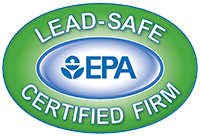http://healthandenergy.com/mold.htm
There are four kinds of health problems that come from exposure to mold:
Mold can trigger an allergic reaction and asthma in sensitized individuals (repeated exposure to mold or mold spores sometimes causes previously non-sensitive individuals to become sensitized). About 15 million Americans are allergic to mold. The most common reactions are flu-like symptoms and asthma. Those with chronic lung or immune problems, are at risk for more serious reactions like fever, lung infections and a pneumonia-like illness.
Some toxic molds such as Aspergillus, Cladosporium, Penicillium, Stachybotrys, and Trichoderma produce mycotoxins capable of causing severe health problems.
When mold grows indoors in moist organic materials, building occupants may begin to notice odors and suffer a variety of health problems associated with mold exposure.
Allergies
Inhaling or touching mold or mold spores can cause allergic reactions in sensitive individuals. Allergic reactions to mold are common, these reactions can be immediate or delayed up to six hours. Allergic reactions include:
- Respiratory problems, such as cough, sneezing, wheezing, infection, and/or difficulty in breathing
- Hay fever-type symptoms
- Nose and throat irritation
- Nasal or sinus congestion
- Watery, reddened, or burning eyes
- Sensitivity to light
- Red eyes
- Runny nose
- Sneezing
- Dermatitis ( skin rash or irritation)
- Headache
- Fatigue
Asthma
Molds can trigger asthma attacks in persons who are allergic (sensitized) to molds.
Irritant Effects
Even in non-allergic (non-sensitized) people, mold exposure can cause irritation of the eyes, skin, nose, throat, and lungs of both mold-allergic and nonallergic people.
Opportunistic Infections
People with weak immune systems (i.e., immune-compromised or immune-suppressed individuals) are more vulnerable to infections by molds (as well as more vulnerable than healthy persons to mold toxins). Aspergillus fumigatus, for example, has been known to cause aspergillosis in the lungs of immune-compromised individuals. These individuals inhale the mold spores which then start growing in their lungs. Trichoderma has also been known to infect immune-compromised children.
Healthy individuals are usually not vulnerable to opportunistic infections from airborne mold exposure. However, molds can cause common skin diseases, such as athlete’s foot, as well as other infections such as yeast infections.
Hypersensitivity Pneumonitis
Hypersensitivity pneumonitis may develop following either short-term (acute) or long-term (chronic) exposure to molds. The disease resembles bacterial pneumonia and is uncommon.
Mold spores are hardened containers, which possess all the DNA instructions needed to create new mold creatures, aerial eggs as it were. If they bump into dry walls they just rebound and go back to floating, but when they bump into wet walls they stick. Out of the broken open shell a single creature’s body appears, then a groping arm grows from that body, a leathery hypha, albino and clear, and then from that hypha grows another, and another, and then many, many others more. These hyphae are used by molds to obtain nourishment. For some species it is the sulfur grains in concrete that are sought, in others it’s the metals in paint, or the glue in wallpaper, or even, for one especially abundant species, found at some time in almost every house in northern temperate climates, it will be the actual antibiotic poisons that the wood they land on produces which they slurp up and use as food. The hyphae excrete enzymes that break down complex organic materials. All over your house these freshly appearing mold creatures will plug into the walls via their hyphae.
Mold typically grows on organic materials that remain moist for more than 24 hours. Materials exposed to high humidity can become moist enough to support mold growth.. The volatile organic compounds (VOCs) released by some molds are toxic and associated with “Sick Building Syndrome“.
Not everything the hyphae absorb can be handled by the main body of the creature further back. Many are too poisonous, and any mold that did accept them would lose its suction grip, unplug from the feeding spot, and fall poisoned to the floor. The way they get out of this problem is by spraying out the excess they don’t need, releasing it in gaseous aerosols. At any moment during the day there will be freshly landed molds on the room walls in your home, aerosolizing carbon dioxide, hydrogen cyanide, ethanol fumes, various alcohols, and much else. Concentrations are generally too low to detect except with special equipment, but there are exceptions. Some are favorable, as with those wall molds related to the wild truffles, which produce an especially delectable emanation; but some of the exceptions are less pleasant, as with the molds that produce a musty or a rubbery smell. When the mold levels are high enough to produce this you’re likely to be able to see them too, enormous colonies, which appear to us as an unpleasant fur. But even when the density is too low to see they’re there, many thousands of separately plugged in mold individuals on a home’s inner walls. In older houses, old layers of paint surviving from the 1920s are likely to contain arsenic — it was used as an oil binder — and fungi plugging in from newer layers above will spray out an arsenic derivative like everything else. At one time this was a hazard, but now there’s so little of this old paint left around that it doesn’t matter. The last poisoning in England from an arsenic derivative released by wall fungi was in 1931.
If enough moisture is available for the mold to emerge from hibernation, they are very likely to start growing on your walls. Most of the mold spores you get were probably produced locally, and any especially damp building in the neighborhood will act as a fertile nursery. Other mold spores come from further away, and the British meteorological service’s sampling aircraft have detected them arriving in Britain across the sea from all sides, with buoyant flights across the North Sea from Denmark taking only two day or so with a fair wind. In the U.S. they can be blown from Texas to Minnesota within a week. The spores can last up to forty years before hatching.

